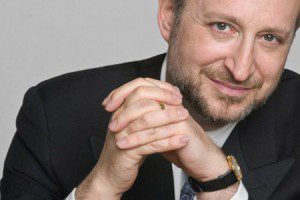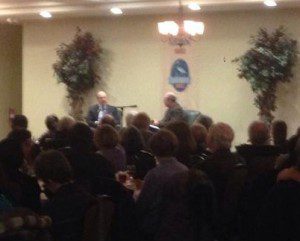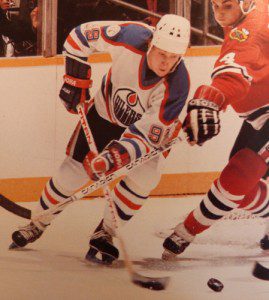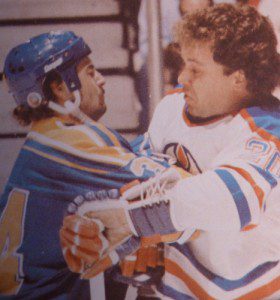
At Centennial College where I work in Toronto, this past week, I faced new students, people with different destinations than my students last fall. As I asked them about their aspirations for the course I was about to teach, one asked about what I do. In passing, I mentioned I’d be interviewing a doctor who believes the human brain can change, adapt, and even heal itself. Curious, I asked the class if anyone had ever had a traumatic brain experience.
“When I was young, I had a stroke,” one student said. “It took away my speech. I couldn’t talk.”
I nodded that her current speech suggested a full recovery. “What happened? How did your speech come back?”
“They taught me Italian,” she said. “I didn’t know a word of it. But in learning the Italian I got my English speech back.”

On Tuesday evening, I learned this woman’s experience may not be as uncommon as one might think. At the latest Blue Heron Bookstore (Uxbridge) author event, I interviewed a Toronto-based psychiatrist, psychoanalyst and author, Norman Doidge. He professes that perhaps the most important breakthrough about our understanding of the brain in 400 years is that it can change its own structure – physically – and in some cases even heal itself.
“It’s what’s called neuroplasticity,” said Doidge, the author of The Brain That Changes Itself in 2007 and this year The Brain’s Way of Healing. In our conversation at the Wooden Sticks banquet room in front of about 150 audience members, Doidge explained that for centuries neuro-scientists viewed the brain as a kind of machine, with parts, each performing a single mental function, in a single location.
Old school also dictated that if any of the brain’s locations was damaged – by a stroke, injury or disease – it could not be repaired. The so-called circuits of such a hardwired device, stricken by some outside force would be gone, permanently, like a busted chainsaw, an out-of-order elevator or a fried computer. But because, in his view, the brain was more like Plasticine, Doidge has travelled far and wide to gather evidence of his thesis.
To make his case, Doidge cited the story of Mary Gaines, a 54-year-old woman from Manhattan, N.Y. As a middle-aged woman she had suffered a major stroke from a burst blood vessel in her brain. The classic left-hemisphere stroke left her with weakness on her right side, Doidge wrote, and affected her language.
“I couldn’t speak, write, read, cough, make any noise,” she told Doidge. “I was mute.”
Gaines wasted four years struggling with the disability. Then in 2012 she learned about an experimental lab in Madison, Wisconsin, where scientists had developed something called the PoNS, a device designed to “speak to the brain through the skin,” via a process called “electro-tactile stimulation.” On the second day in the lab, Mary Gaines began to feel a change.
“It was like a comb had gone through my brain,” she told Doidge, “and I didn’t have any tangles anymore.”
Doidge’s storytelling reminded me of my own encounters with people attempting to stimulate the brain to improve performance. In 1982, I joined sports journalists John Short and George Hanson in the production of a book about the Edmonton Oilers Hockey Club, then emerging as a force in the NHL.

With the likes of Wayne Gretzky, Mark Messier, Jari Kurri and Paul Coffey, the Oilers had become contenders following their move from the old World Hockey Association league. I was given the job of assembling their story in time for the 1982 Stanley Cup Finals, the finals everybody figured the Oilers would win.
Peter Pocklington, the team’s always controversial and never conventional owner, had become a firm believer in the power of psycho-cybernetics. He’d hired American psychologist John K. Boyle and his “Omega Seminar,” designed to implant in the brains of the young hockey players the principles of positive thinking.
One of the converts to the system of listening to the Omega tapes, repeating out loud its concepts and goals, was 28-year-old forward Dave Lumley. Formerly with the Montreal Canadiens and picked up by the Oilers in 1979, Lumley was skeptical the psycho-cybernetics concept at first.

“But (Boyle) had us looking back over our shoulders to see how far we could see,” Lumley told me. “Then, he told us to test ourselves to try looking even farther. Sure enough, I could see farther. It was voodoo, but it worked.” The Oilers didn’t win the Cup that year, but just two years later the club’s positive training bore fruit.
Dr. Norman Doidge faces an uphill battle with his Brain’s Way of Healing thesis. Indeed, the medical and pharmaceutical communities in Canada are a long way from accepting.
“They’re not exactly eager to wash my feet,” Doidge said.
Still with sales of over a million copies of his first book, in more than 100 countries and in 20 different languages, Doidge believes that the mainstream medical world will have to start taking notice. Even their brains can’t be that resistant to credible alternative thinking.